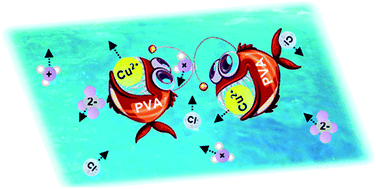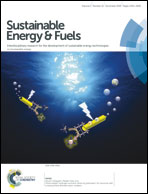A flexible dual solid-stateelectrolyte supercapacitor with suppressed self-discharge and enhanced stability†
Abstract
Redox supercapacitors (SCs) have recently been developed as a high-efficiency strategy for energy storage due to their high charge storage capacity and easy accessibility. Developing a low-cost, highly efficient and universal method to control the self-discharge (SDC) process of redox supercapacitors (SCs) would amplify their applications in energy storage. This report on a novel dual solid-state electrolyte supercapacitor (DSES) has demonstrated that the addition of polyvinyl alcohol (PVA) into a CuCl2/H2SO4 active electrolyte could significantly suppress the SDC process, which takes 10 times longer for 50% energy retention, benefiting from moderate kinetics and ion crossover rate. The role of the dual electrolyte system is also illustrated to be effective for improving the cycling stability. Hence, our strategy, which is effective in enhancing the energy storage, mitigating the SDC process and improving the cycling stability, could provide a versatile method for designing low-cost and stable redox SCs for energy storage.



 Please wait while we load your content...
Please wait while we load your content...